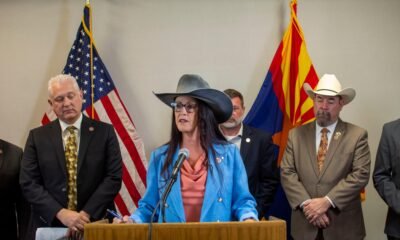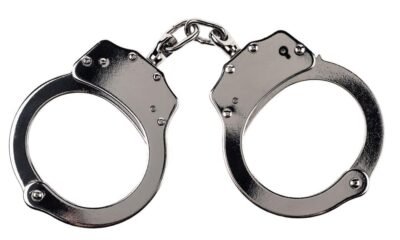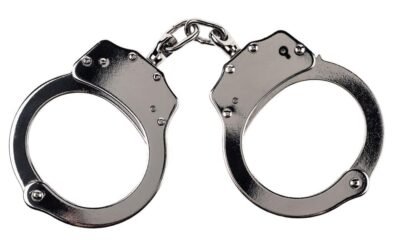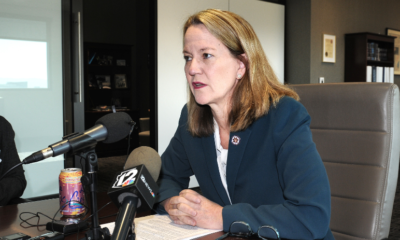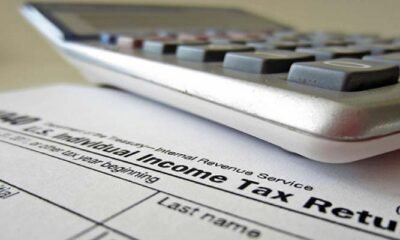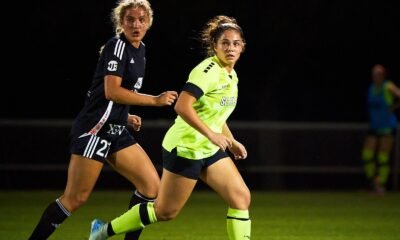arizona
Surge in Outside Spending Shapes AZ Legislative Battles as Democrats Eye Majority

In a significant development for Arizona’s upcoming legislative elections, the Democratic Legislative Campaign Committee (DLCC) has announced an influx of nearly $1 million into pivotal races statewide. This comes on top of over $8.5 million already spent by various outside groups targeting key districts.
The DLCC’s campaign is part of a broader $2 million advertising initiative shared between Arizona and Pennsylvania, aimed at flipping both state legislatures to Democratic control for the first time in nearly six decades. This funding marks the DLCC’s first direct voter engagement effort, following previous expenditures of approximately $350,000 in support of Democratic candidates.
“Control of Pennsylvania and Arizona’s legislatures will come down to just a handful of votes, and abortion could be the driving message that determines who wins in November,” said DLCC Communications Director Sam Paisley.
Abortion rights have emerged as a central theme for Democrats this election cycle, underscored by a constitutional amendment on reproductive rights that will be presented to Arizona voters this November.
Analysis by the Arizona Mirror indicates that the surge in independent expenditures has granted Democrats a slight edge in several competitive districts. In a review of 11 key races, Democratic-leaning independent expenditures totaled around $4.67 million, surpassing the $3.87 million accumulated by Republican-aligned efforts.
Such external spending often eclipses candidate fundraising. For example, in the fiercely contested House race for Legislative District 13, outside groups have invested over $1.6 million, more than double the $826,310 raised by all four candidates—Democrats Nicholas Gonzales and Brandy Reese, alongside Republicans Jeff Weninger and Julie Willoughby.
In the Senate race for District 2, covering much of north Phoenix, outside contributions have reached nearly $1.42 million. This figure significantly overshadows the $841,000 raised by Republican Sen. Shawnna Bolick and her Democratic opponent, Rep. Judy Schwiebert. Such dynamics reveal an overarching trend where independent expenditures play a crucial role in shaping electoral outcomes.
Interestingly, the most expensive race currently is in Legislative District 13’s House contest, with independent expenditure surpassing $1.6 million. While Senate races generally favor Republican support, Democrats have gained more ground in House races, with four out of six key contests seeing heavier investment in their favor.
Leading the way in outside spending are several groups: Future Freedoms ($2.3 million) supporting Democrats; Responsible Leadership for AZ ($1.5 million), House Victory Fund ($1.5 million), and Arizona Senate Victory Fund PAC ($1.3 million), all supporting Republicans; and Stand For Children Arizona ($1.1 million) backing Democrats.
Political analysts observe that this surge of financial backing reflects the electoral volatility inherent in these races, which could significantly influence legislative control. Earlier in the year, progressive lobbyist Marilyn Rodriguez expressed optimism about Democratic prospects, noting, “We have to work hard, but this is gettable,” regarding their chances of achieving legislative majorities.
As Democratic successes in the 2022 elections continue to reshape the political landscape, party leaders aim to provide Gov. Katie Hobbs with the legislative support needed for her agenda.
On the other hand, despite being outspent, Republicans have found moments of optimism, particularly following Vince Leach’s primary victory over incumbent Justine Wadsack in a Tucson-area Senate district.
As the general election campaign heats up, both parties are framing their rivals in extreme terms. Democrats characterize Republicans as aligned with far-right, MAGA politics, while Republicans label Democrats as radical socialists unfit for Arizona.
With substantial outside funding and aggressive campaign strategies, voters can anticipate a fierce battle for legislative control as one of the most closely watched and costly election cycles in Arizona unfolds.
